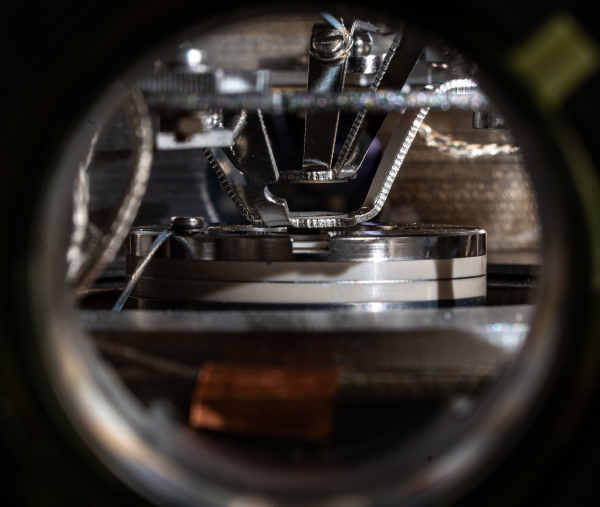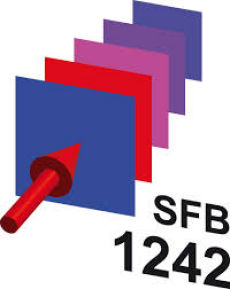SFB 1242

Exploring particle-induced excitations in the time domain
The impact of an energetic particle onto a solid surface generates a strongly perturbed and extremely localized non-equilibrium state, which relaxes on extremely fast time scales. In order to facilitate a time-resolved observation of the relaxation dynamics using established ultrafast pump-probe techniques, it is necessary to pinpoint the projectile impact in time with sufficient accuracy. In this project, we develop a novel ion source which generates ion pulses of (sub-) picosecond duration to access the ultrafast dynamics for the first time with an experimental technique.
Detailed ion trajectory simulations (for details see New J. Phys. 21 (2019) 053017 ) show that single ion pulses of sub-picosecond duration can be generated via femtosecond photoionization of rare gas atoms entrained in a supersonic jet. The photoion cloud can be generated with a standard table-top laser system. We could show that Arq+ ions with q = 1–5 can be generated, which are then accelerated to energies in the keV range over a very short distance and bunched to impinge onto the target surface in a time-focused manner. Charge state broadening is insignificant for pulses containing up to 10–20 ions and starts to increase the pulse width only above ~50 ions/pulse.
The realization of the corresponding experimental set-up has now been finalized. An image of the ion buncher is shown above. The measured arrival times of individual 4 keV Neon ions is on the order of 10 ps (for details see arXiv:2305.01399 ). This represents not only the shortest pulses of monoenergetic ions in the keV-range ever, our results also open the door to an entirely novel class of pump-probe experiments where ions provide the pump pulse. In this way, we want to follow - time-resolved - the local lattice disorder, the transient electronic excitation and the ion-induced particle emission (“sputtering”) following a keV projectile impact.
Investigators:
L. Breuer
M. Schleberger
K. Sokolowski-Tinten
A. Wucher


